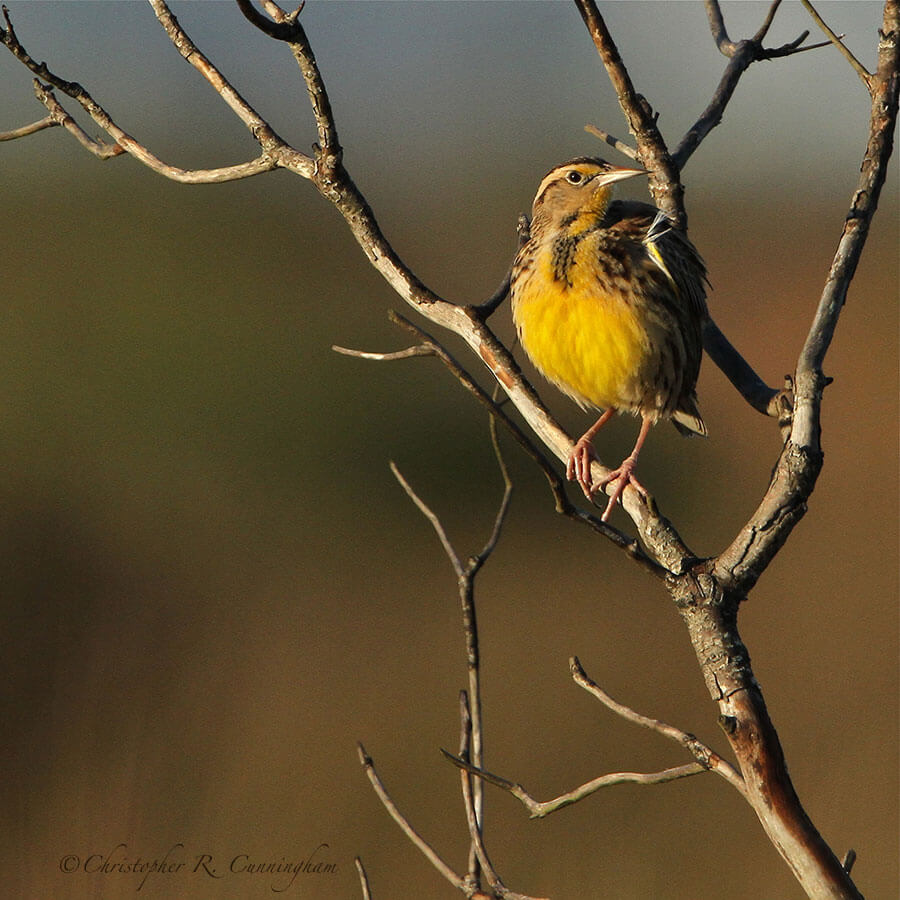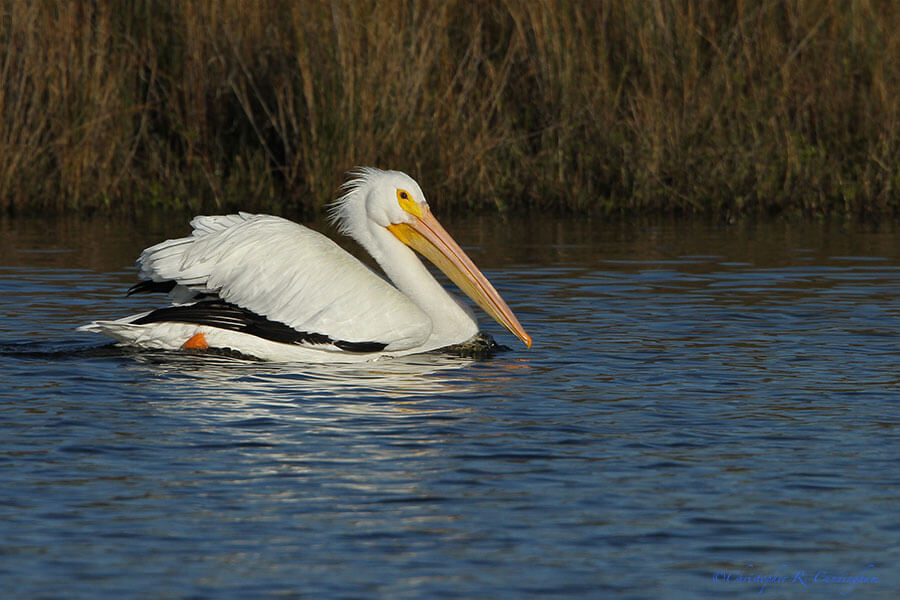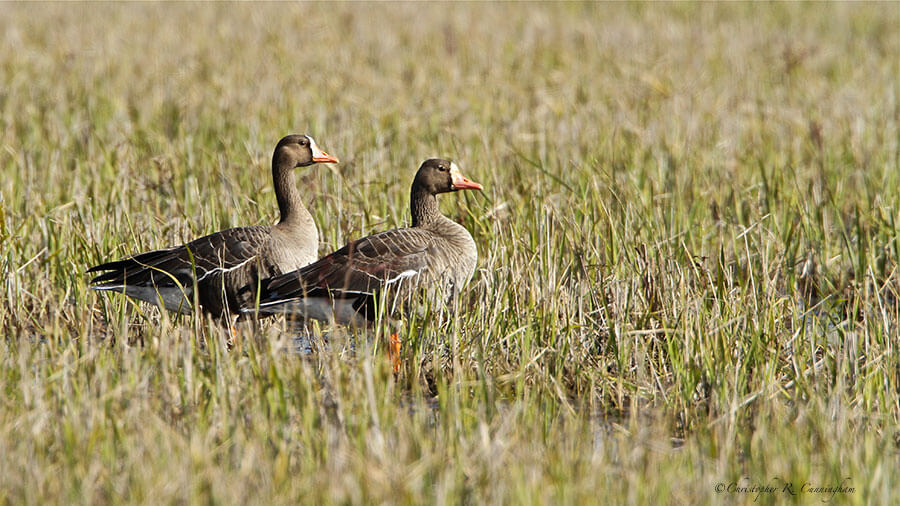
In keeping with new year’s resolutions, we struck out this three-day weekend for Galveston in search of new areas to explore for birds. We scouted the northern edge of San Luis Pass, Lafitte’s Cove, and several trails we had not visited before at Galveston Island State Park, especially the Prairie and Freshwater Ponds Trails. We were lucky to see a group of about twelve Red-breasted Mergansers in a tidal channel at San Luis Pass. The Freshwater Ponds and Prairie Trails produced White-tailed Kites, Northern Harriers, Red-tailed Hawks, a Barn Owl, Eastern(?) Meadowlarks, Savannah Sparrows, a Palm Warbler, Marsh and Sedge Wrens, Orange-Crowned Warblers, Common Yellowthroats, American White Pelicans, and Buffleheads, among others.
On this trip the conditions were just what the doctor ordered: clear and dry, upper thirties in the early mornings and warming into the low sixties by afternoon. Over the past several weeks unusually nasty weather had keep us indoors, and our photographic skills atrophied. On this trip I got to practice my in-flight, hand-held technique with the 300mm f/4L IS and tripod work with the 500mm f/4L, including tracking swimming birds with IS Mode 2.

We were excited to discover a man-made “water feature” in a wooded area at Lafitte’s Cove, specifically designed for bird watchers and photographers. This feature is very similar to the one maintained by the Texas Ornithological Society at Sabine Woods Sanctuary. Although I have never experienced anything but the utmost in civility at Sabine Woods, apparently photographers and binocular users can’t get along with each other at Lafitte’s Cove. Like at the Smith Oaks Rookery (where squabbles and hard feelings are common) there are posted time limits for spots and separately designated areas for binocular users and tripod photographers/spotting scope users. We’ll find out during spring migration if both groups can respect posted rules, avoid hogging the best viewing/shooting spots, and refrain from snarky comments . . . although a “night of the tiny fists” type encounter as described by the late Gore Vidal might be amusing to witness.
On the way home we visited the Skillern Tract of Anahuac National Wildlife Refuge, where we were treated to a pair of Greater White-fronted Geese in one of the eastern fields near the tract entrance. During most of this trip to Galveston and environs I had the feeling that the birds were warier than usual. The frequent crack of gunfire in the background–not to mention yahoos in ATVs crashing through the marshes, music blaring–may hold the key. During the drive back along the White-knuckle Express (I-10), where I was treated to many interactions with maniacs and nincompoops, I had time to reflect upon the wonderful effects humans have had on the biosphere.

© 2013 Christopher R. Cunningham. All rights reserved. No text or images may be duplicated or distributed without permission.